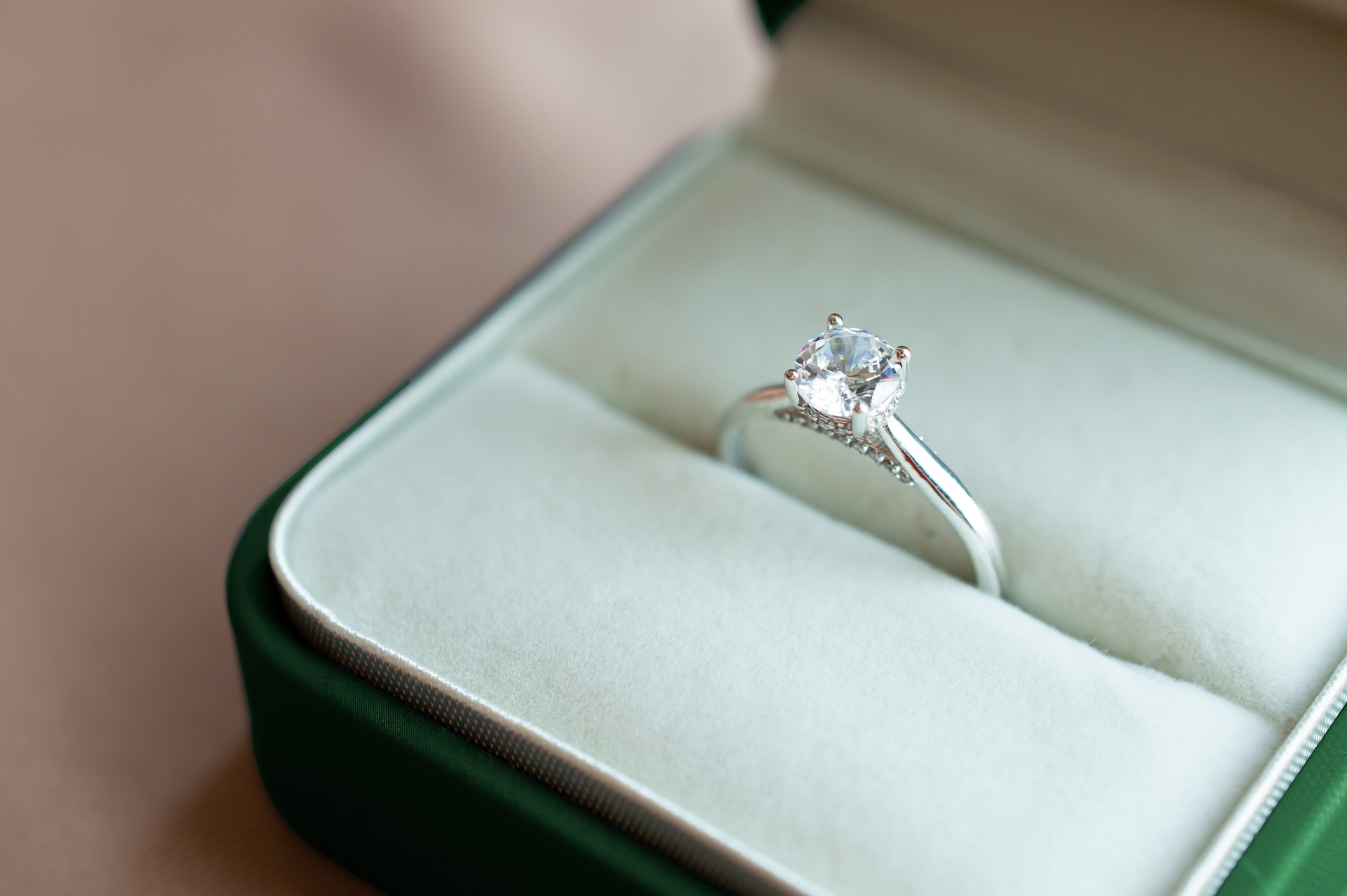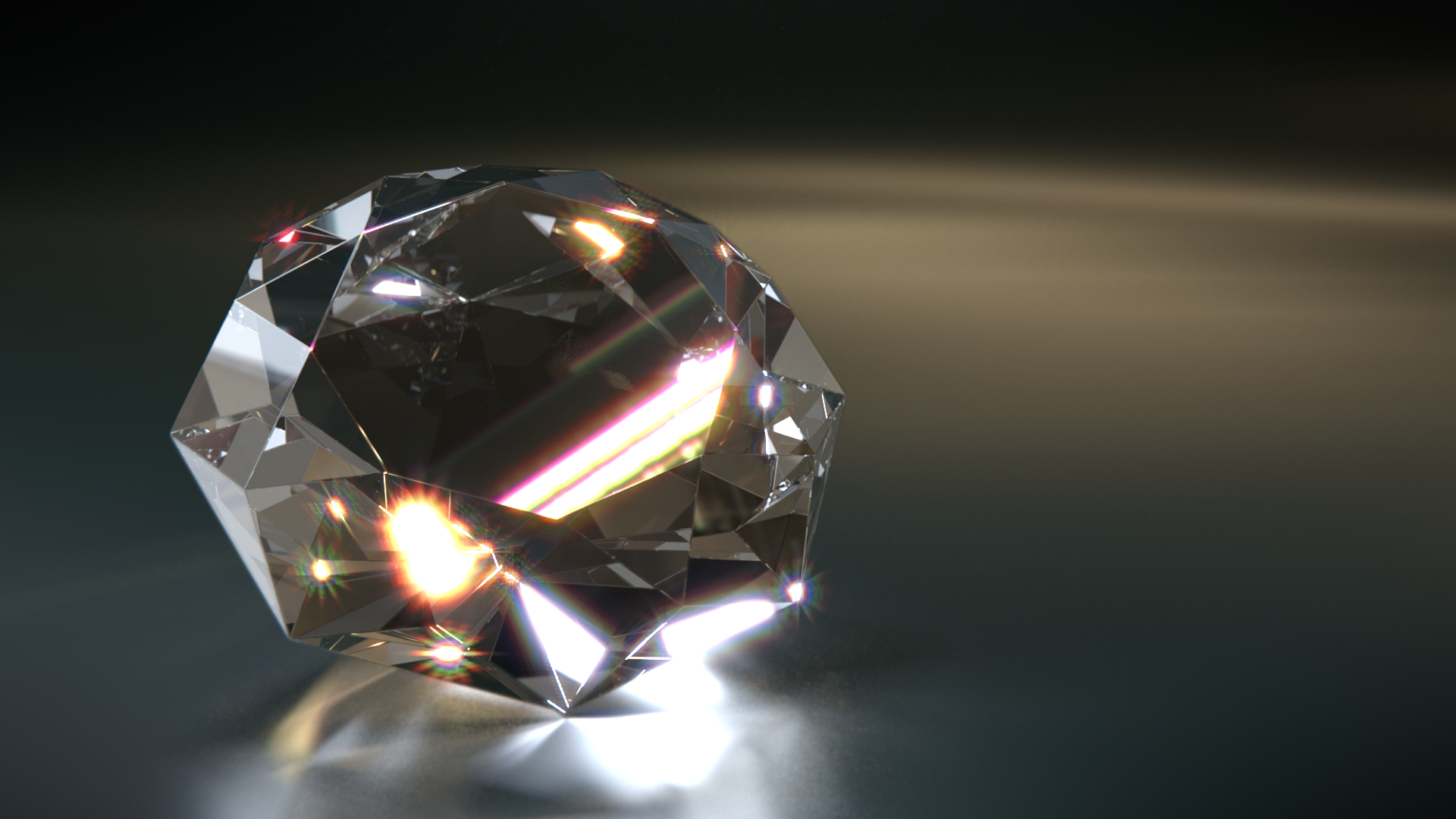Why Do Diamonds Shine - The Science Behind The Sparkling Rock
“„A diamond’s sparkle is the result of three things: reflection, refraction, and dispersion. When light hits a diamond, it reflects off of the facets and creates the appearance of a sparkle. Refraction occurs when light passes through the diamond and gets scattered. This creates the “fire” in a diamond. Dispersion is the final component of a diamond’s sparkle and is what gives the stone its rainbow effect.- Dr. Madhavi Deshpande.
It's a question the team in ELM4 has asked every time we see the great catalog of diamonds on Bernardine.com and you can see their diamonds here. The answer is more scientific and interesting than you could think.
How is it possible for a rock that was hewn from the earth to shine so brilliantly?
Contrary to popular belief, a natural diamond isn't particularly shiny. How the stone is carved and how light reflects off it determine how sparkly it will be.
Three processes, reflection, refraction, and dispersion are responsible for a diamond's apparent brilliance.
Definitions You Should Understand Before Proceeding
- Reflection is what happens when a beam of light hits a perfectly smooth, perfectly polished surface and bounces back.
- When a light beam strikes a diamond and bounces back, reflection takes place, giving the diamond an instantaneous sparkle. When light strikes a diamond and quickly bounces back up, it is said to reflect, giving the diamond an instantaneous sparkle. When a wave travels through one medium and then into another, it bends. The two materials' different densities are what lead to the bending.
- Reflection is the splitting of white light into its component colors when it passes through a glass prism. The colors that are produced are violet, indigo, blue, green, yellow, orange, and red, in that sequence.
As light passes through a diamond, it is fragmented and scattered, giving diamonds their distinctive brilliance.
The refraction is as shown. The light ray passes through the diamond due to refraction and dispersion.
When light goes through a diamond, it acts like a tiny, complicated prism, sending light in different directions and making it look like it's sparkling.
And Bear In Mind The Shape
The diamond should also be well polished if it has been properly cut, shaped, and polished, among other things.
The brilliance of a diamond is affected by polishing over time. By getting rid of any remaining dirt or flaws on the outside, the polishing process makes diamonds clear and brilliant.
We now know what gives diamonds their luster and sparkle. It is the jewel with the most exquisite gem. It becomes more brilliant under intense light, cutting, and polishing.
Why Do Diamonds Shine?
As light passes through a diamond, it is fragmented and scattered, giving diamonds their distinctive brilliance.
The refractionis as shown. The light ray passes through the diamond due to refraction and dispersion.
When light goes through a diamond, it acts like a tiny, complicated prism, sending light in different directions and making it look like it's sparkling.
When a diamond is lit straight from above, the light enters the stone, strikes one face, then the other, and then leaves.
The process of reflection is what makes a diamond shine. But from the outside, it looks like the light just comes from inside the diamond.
Light will depart from the bottom of a diamond if it is cut too shallowly, but from the side if it is cut too deeply.
Only a tiny fraction of the light that strikes the diamond is reflected while reflection is taking place; the majority of the light simply passes through it.
Light is broken and scattered as it travels through the diamond. Basically, that light bends, which makes the famous sparkle that has mesmerized us for hundreds of years.
The third element is what gives the diamond its true "fire," that rainbow look that ultimately makes you want to take out a mortgage to buy the magnificent stone.
In essence, diamonds are little prisms. Our fingertips are left with this gleaming fire after light enters the top, bounces off the facets, and eventually exits back out from the top.
You could believe that the only glory a diamond receives comes from light, but the black parts of a diamond also have a vital function.
All of the diamond's facets won't light up until they receive equal illumination from all directions.
Because of reflections from nearby dark objects, some areas of a diamond appear dark to the naked eye.
You may say that this creates a type of contrast. Isn't it true that the moon shines brightest against a pitch-black sky?
Don't you think a candle's flame appears much more powerful in a dark room than it does in a well-lit one?
A diamondwill still glitter without contrast, of course, but it won't be as alluring or alluring!
Our brain offers an intriguing explanation for why our eyes are so lured by the sparkle of a diamond.
It has been discovered that certain regions of the visual cortex react to things with sharp contrast edges.
Thus, our eyes magnify the diamond's apparent brightness since the dark and light facets are so close together.
People Also Ask
As light passes through a diamond, it is fragmented and scattered, giving diamonds their distinctive brilliance.
The refraction is as shown. The light ray passes through the diamond due to refraction and dispersion.
Are Diamonds Supposed To Shine?
We all adore the way a diamond sparkles in the sun. Put your stone in direct sunlight to see how it responds by observing the colors it reflects.
A genuine diamond will reflect both white light and the entire rainbow. The diamond isn't genuine if you only receive one of the two.
What Makes A Diamond Shinier?
The more reflecting surfaces there are to bounce and scatter light, the more facets a diamond possesses.
A single-cut diamond with only 17 or 18 facets will not appear to sparkle as much as a round brilliant-cut diamond with 57 or 58 facets.
Why Do Diamonds Shine At Night?
Because of their high refractive index, diamonds shine. The amount of light reflected depends on the refractive index.
Lighter reflections result from materials with higher refractive indices. The diamond is cut so that a light ray striking it reflects off of it several times inside the stone.
Conclusion
Moving the stone just a little bit will produce a dramatic flashing effect that will cause various facets to light up and dim as the light source changes its angle of impact.
Shine in a diamond is also influenced by its clarity.
The amount of light entering and leaving the stone will be impacted by any inclusions or surface flaws, which will change how much sparkle is produced.
Polishing is the last stage in creating a flawless stone. The brilliance of a diamond is significantly and permanently affected by polishing.

